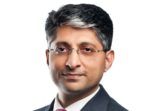Hedge funds and bonds should be “front and centre” in the minds of investors in 2023, according to Norman Villamin, chief investment officer for wealth management at UBP, speaking at the pure-play bank’s 2023 outlook.
“One theme that we think continues as we move through the new year is the hedge fund story, which was very helpful in not only managing risk but driving returns in 2022,” he said.
“We think that moves front and centre along with bonds as the most important asset classes for investors to think about here.”
The shift in emphasis towards fixed income is not altogether surprising as a number of asset managers and distributors have been pleading with investors to reengage with the sector, citing more attractive yields and the expectation that the US Federal Reserve will begin to end its rate hiking cycle.
Some asset managers have also pointed to the fact that issuers in Asia took advantage of the abundance of liquidity made available in the immediate aftermath of the pandemic to restructure their debt so only a small amount is coming up to maturity before 2024.
Villamin noted that entry points for fixed income were actually less attractive right now as Treasuries have rallied on expectations of a Fed rate cut towards the end of 2023.
“While everyone is starting to look for rate cuts, particularly in the US in 2023, we don’t think that’s going to take place. We think that’s very unlikely in the New Year and that means because we’ve seen bond yields rally here to start the year we think entry points for bonds are a little higher than the yields are today, probably closer to about 4% on Treasury yields,” he said
“But that does mean investors have to be ready for opportunities in the bond space because that is one of the areas we think where most attractive opportunities lie in 2023.”
Within fixed income, talk inevitably moves to China’s property sector, which has faced a liquidity squeeze ever since regulators introduced the so-called ‘three red lines’ policy, which imposed strict debt and cash-flow targets on real estate firms.
Earlier this month, Bloomberg reported that China would finally relax its three red lines policy, which came only a few months after regulators introduced a 16-point plan to provide greater support for the embattled sector.
Still, UBP does not feel that now is a good time for investors to reengage with the sector.
“There has been quite a credit differentiation between the stronger ones and the weaker ones. Now we’re still very cautious about the Chinese property space, in particular the high yield names, mainly because a lot of restructuring is still going on. There’s still uncertainty about what the restructuring plan will be,” said Anitza Nip, head of fixed income research for Asia.
Meanwhile, hedge funds actually turned in their worst year last year since the global financial crisis hit, although this belied a strong showing in a number of sub-strategies, particularly macro funds.
Macro funds, most notably the larger hedge funds like Bridgewater Associates and Brevan Howard, posted elevated earnings on the back of last year’s unprecedented levels of volatility, booking gains primarily from directional rate trades and being long the US dollar.
Last year’s performance was in contrast to most years since the GFC, where central bank easing measures have suppressed volatility and made it harder for macro funds, and hedge funds generally, to deliver returns.
UBP reckons that although we may not be returning to the era prior to the GFC when returns soared, volatility is now being baked more into the system as central banks grapple with inflation, making it a constructive environment for hedge funds.
“Our view is hedge funds probably won’t get back to the golden year period but we do think there’s going to be an expansion in their headline returns over the next three to five years,” said Kier Boley, chief investment officer for alternative investment solutions.
This environment is likely to be particularly conducive to macro funds, although Boley picked fixed income alternatives as the most promising sub-strategy.
“I think our highest conviction is within fixed income alternatives. At least the first half of 2023, you can see that the higher risk free rates will create wider credit spreads in certain markets, which means very attractive from a long positioning for hedge funds’ portfolios. You’re getting the increased carry and of course one of the advantages of hedge fund structures is they can actually run gross balance sheets larger than 100% so actually they can boost the carry within the portfolio,” he said.
Regarding equities, UBP remains cautious as they reckon that while we have already witnessed multiple compression, we have yet to see a major downgrade in earnings and this remained likely as the economy potentially heads towards recession during the first half.
UBP noted that a lot of the recent rally in Chinese growth stocks had been euphoric and while it was justified to some degree as valuations were still supportive, it is unlikely that stock prices will continue to rise uniformly.
“I think there’s more upside because valuations are still attractive relative to global equities,” said Vey-Sern Ling, senior equity advisor for Asia technology at UBP.
“Having said that, nothing goes up in a straight line and in the past couple of months it’s been pretty much a straight line. I think at some point there will be some pullback and some consolidation and investors in the market will have to re-evaluate the factors that are driving the rally.”
Ling also noted that geopolitical risks still remained a concern when it comes to Chinese equities.
“There are some geopolitical risks that will make the long-term case for Chinese equities quite fragile. But in the short-term, several issues are clearing up that can help the near-term performance: the reopening, the Chinese ADRs that were facing delisting, that issue has passed as well, the tech regulatory environment, which has been in crackdown mode over the last two years, has been much more supportive,” he said.

















